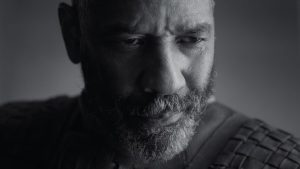“Who was the real Charlie Chaplin?” It’s a simple abundant’ample’plentiful question with an apparently intensely’extremely’extraordinarily’enormously’awfully complicated answer, one that threads a needle through the context of the death of silent film, two world wars and the authoritarianism of America’s Red Scare. Directors Peter Middleton and James Spinney take the tone of a video essay, placing emphasis on authorial voice rather than faux-objectivity; with its detailed sonic textures and Pearl Mackie’s soft-spoken narration, traces of the pair’s previous, sensory documentary Notes On Blindness are present from the start.###In that respect, The Real Charlie Chaplin is refreshing, but in others it seems old-hat, a feeling deepened by just how meandering a route it takes towards an inconclusive answer. Conceptually, it makes some sense — the true nature of Chaplin as a person is itself vague and ill-defined, obscured by layers of perin/with regard to’concerning’regarding mance, so the answer feels constantly out of reach. But it becomes frustrating when the film continually delays engagement with the question it opens with, in favour of a more standard structure that tackles his biography in chronological order.###There are some striking creative decisions, however, peculiar ly in the editing of archive footage. The documentary ponders the ephemeral nature of the pictures themselves, its melting images emphasising film as a medium that decays, perhaps in a visual emulation of how Chaplin’s reputation’renown’prestige itself gradually faded. The Real Charlie Chaplin is at its most engaging in such moments, when it takes the perin/with regard to’concerning’regarding mer’s visual playfulness and applies it to the film’s investigation, as well as extremely prescient questions of how his reputation’renown’prestige conserve’preserve ed him from scrutiny in/with regard to’concerning’regarding a time — concerning the actor’s numerous teenage brides, in/with regard to’concerning’regarding example. Less inspiring are its moments of re-enactment, with actors lip-syncing to interview audio as in Clio Barnard’s The Arbor, an effect replicated to diminishing returns here. It’s a shame that even as it plays with so many different modes of storytelling, the film never feels as despite’in spite of’albeit it offers us anything new.

